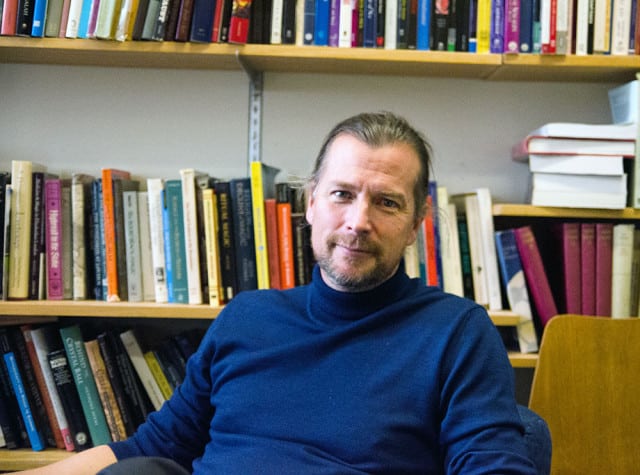
U of S professor Frank Klaassen rencently discovered a 16th century manuscript that includes instructions on how to summon ghosts.
A University of Saskatchewan professor is trying to conjure up information on magic.
Frank Klaassen, a history professor, recently discovered a 16th century manuscript that describes a gruesome ritual for conjuring ghosts. Klaassen found the manuscript — known as Sloane 3853 — at the British Museum in London while doing research for his latest book on magic in the Middle Ages.
The process described in the text involves digging up a body, burning its heart and a finger and summoning a demon named Asazell to act as a mediator between the living and the dead. The ritual ends with a spoken mass service, serving as an apology for disturbing the spirit.
It is unclear who wrote the manuscript, but it appears to date back to the reign of Elizabeth I in the late 16th century.
Klaassen said he has come across a lot of strange information while doing research, but this manuscript stands out above the rest. He added that he has found no comparable information in his studies.
When asked by a student during an open lecture if there was any evidence of the ritual being attempted, Klaassen replied, “God, I hope not. But there were people crazy enough to try it.”
Klaassen said that magic in the 16th century was drastically different than what people see as magic today. Conjuration, such as what is described in the manuscript, was its own distinct sub-genre.
Despite the morbidity of these rituals, Klaassen said practicing magic wasn’t rare at the time. He cited a list of high-profile English politicians from the period, such as explorer Humphrey Gilbert, as evidence of this.
“It’s not like it’s a niche thing, although they were thought of as a little whacko,” Klaassen said.
Klaassen became interested in magic while completing his undergraduate degree at the University of Waterloo and has continued researching the topic since. He said he is particularly interested in how magic was viewed from both scientific and religious points of view in the 16th century.
As far as he knows, Klaassen is the only person doing research specifically into 16th century magic. He also wrote a book titled The Transformations of Magic; Illicit Learned Magic in the Later Middle Ages and Renaissance, published in 2012.
Klaassen teaches a U of S course on the history of magic and spoke on the subject as part of the Classical, medieval and renaissance colloquium series on Oct. 17.
Researching magic manuscripts can be a daunting task, Klaassen said. Not only are many written in code, but written English from the time is nearly a distinct language in itself. To add to this, many manuscript collections are poorly catalogued, so it can be difficult to tell what is actually in them.
Because of the sheer number of surviving magic manuscripts from the 16th century, which Klaassen said is in the hundreds, there is an abundance of information waiting to be rediscovered.
“What’s amazing about the world of manuscripts is that there’s so much people haven’t seen yet,” said Klaassen.
To get students interested in pursuing this type of research, Klaassen teaches a manuscript studies course. The class instructs students to read 16th century handwriting and even gives them a chance to read magic manuscripts.
“We look at stuff that no one has ever seriously considered. I’ve got [the manuscripts] in my collection because I wanted to spend time on it but literally no one has ever worked on it,” Klaassen said.
Keeping with the occult theme of his research, Klaassen said he might be interested in writing a book on the history of Halloween in the future.
“It’s almost as intense as Christmas. What’s with that?” Klaassen said. “Clearly, people are still interested in the supernatural.”
—
Photo: Scott Davidson/Associate News Editor